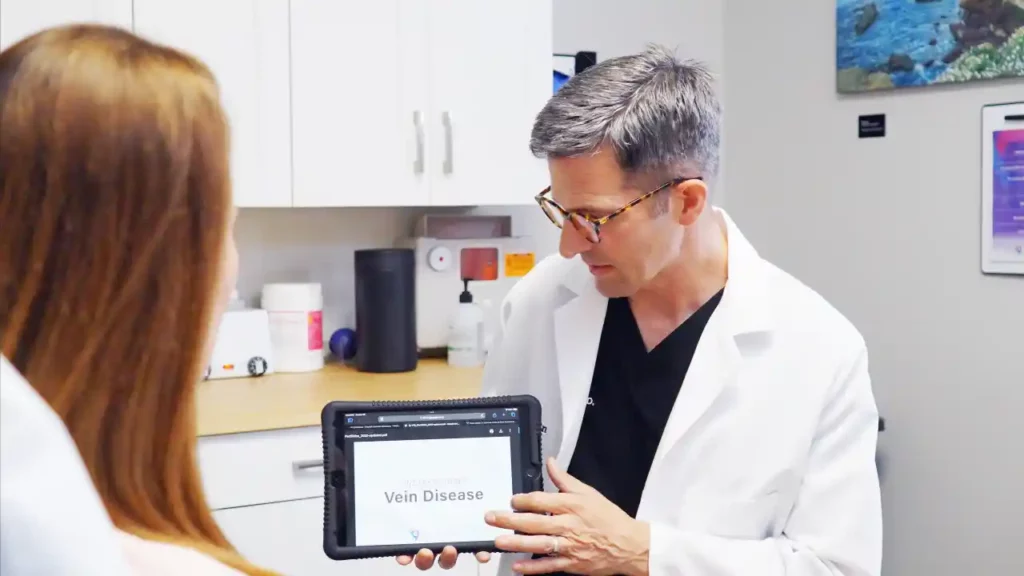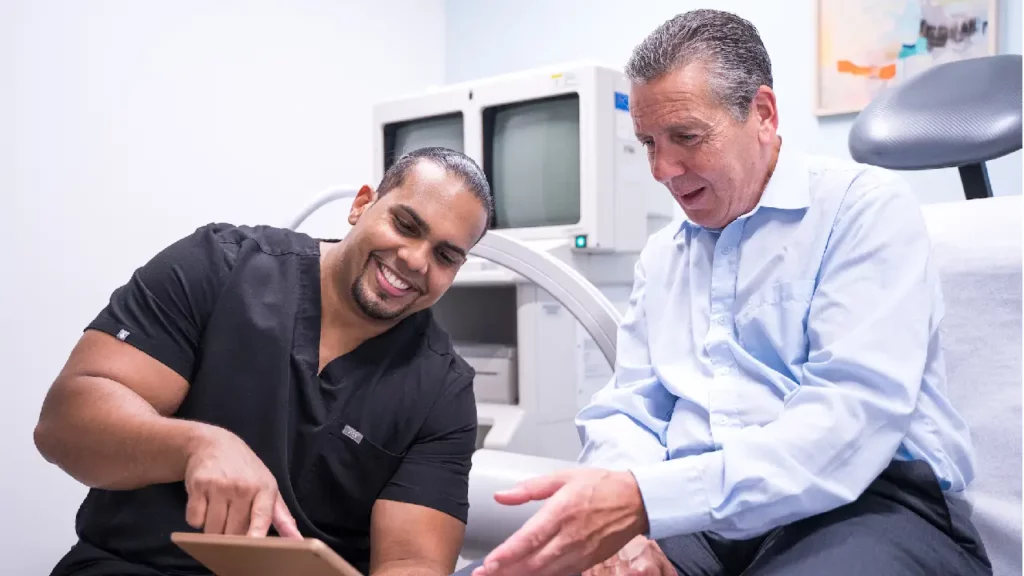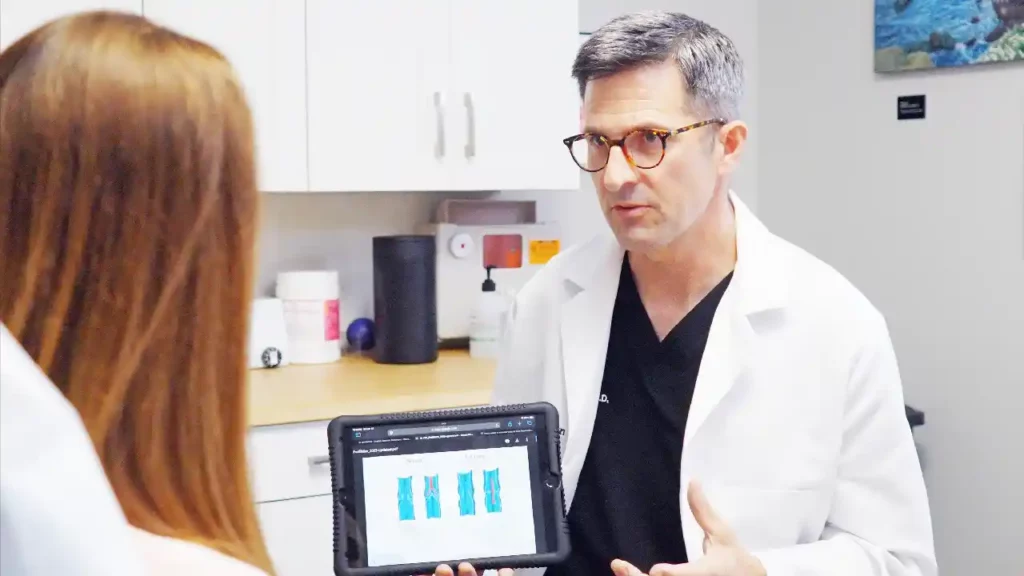Understanding Vein Treatment Cost
Vein treatment costs can vary, a lot. Why? Because it depends on what kind of treatment you need, who’s doing the treatment, and where you’re getting it done. If you’re looking at basic treatments for minor vein issues, you might not have to dig deep into your pockets. But, if you’re dealing with serious vein problems that need advanced treatments like laser therapy or surgery, then you’re talking about more money. We’re not just throwing numbers out without a base. The American Society for Dermatologic Surgery notes treatments can range from hundreds to thousands of dollars per session. Yes, your health insurance might cover some of it, especially if it’s considered necessary medical care and not just for looks. But, coverage can be a tricky road with lots of “ifs” and “buts.” So, getting a clear answer from your insurance provider before taking any steps is wise. In short, vein treatment isn’t a one-price-fits-all deal. It swings widely based on what you need, where you go, and what your insurance agrees to take on.

Common Factors Influencing Vein Treatment Expenses
The price you pay for vein treatment can swing based on a handful of variables. First off, the type of treatment you need plays a big role. Options range from simple laser treatments to more involved surgeries. The more complex, the heftier the price tag. Then there’s the vein specialist’s experience and location. Top docs in big cities usually charge more. Don’t forget about the facility where your treatment happens. High-end clinics might offer a fancier vibe but expect to pay extra for that luxury. Lastly, the extent of your vein issues also matters. More severe cases require more sessions and possibly different types of treatments, racking up the cost. Keep these in mind when budgeting for your vein fix.
Consult if your insurance covers vein treatments!
Initial Consultation: What Costs to Expect
First off, stepping into a clinic for a vein treatment consultation might have you guessing about costs. Let’s break it down. Mainly, clinics charge for the initial consultation. This fee varies but expect it to be somewhere in the range of (100 to )400. Why such a range? It’s based on the clinic’s location and the specialist’s experience. During this first visit, the doctor will check your veins, maybe do an ultrasound to see what’s going on inside, and talk about what treatments can help. Now, this might sound pricey, but many clinics apply this consultation fee towards your treatment cost if you decide to proceed with them. Remember, knowing what you’re up against is the first step to managing it. Keep in mind, this is just the start, and additional tests or scans will add to the bill, but tackling problems early often saves money down the road.
Types of Vein Treatments and Their Costs
Treating veins isn’t a one-size-fits-all deal. There are several types, each with its own cost. Let’s break it down simply. Sclerotherapy, a popular choice for spider veins and small varicose veins, can hit your wallet for about $700 per session. You might need a few sessions to see results. Then there’s Laser treatments. These are great for smaller veins and can cost up to $400 per session, but like sclerotherapy, multiple sessions may be necessary. For the bigger, more troublesome varicose veins, there’s something called Endovenous laser therapy (EVLT). It’s a bit pricier, costing around $3,000 per leg, but it’s effective. Lastly, we have Radiofrequency ablation, also leaning on the costly side at about (3,000 to )5,000. It’s similar to EVLT in terms of what it treats and how. Keep in mind, prices can vary based on where you live and the clinic you choose. And remember, you’re not just paying for the procedure. You’re investing in advanced technology and the expertise of the medical team to get your veins – and your confidence – back in top shape.
Insurance Coverage and Vein Treatment
Many people believe that insurance won’t help with vein treatment, but that’s not always the case. It boils down to the difference between cosmetic and medical necessity. If a doctor determines your vein treatment is medically necessary — say, to prevent health complications like blood clots or ulcers — insurance might cover some costs. This often includes treatments for varicose veins or deep vein thrombosis. However, if the treatment is purely for cosmetic reasons, like spider veins that you just don’t like the look of, chances are you’ll be footing the bill. Before you decide on any procedures, it’s critical to talk to your insurance provider. Find out what they cover and what they don’t. Procedures medically necessary often require prior authorization, so ensure your doctor’s office helps navigate those waters. Remember, each insurance plan is different, so benefits can vary widely.
Financial Assistance Options for Vein Treatment
Vein treatment might not always get covered by insurance, especially if it’s seen as a cosmetic issue. But, don’t let that stress you out. There are financial assistance options and payment plans that can help. First off, ask your clinic if they offer any in-house payment plans. Many do, allowing you to spread the cost over time rather than paying all at once. This can make a big difference. Also, look into medical credit cards. These are specially designed for healthcare expenses and often come with interest-free periods if you pay back within a certain timeframe. Just watch out for high interest rates after that period. Another route? Health savings accounts (HSAs) or flexible spending accounts (FSAs) if you’ve got them. They use pre-taxed dollars to pay for eligible healthcare expenses, which can save you money. Lastly, some organizations and charities offer grants or financial aid to those in need of vein treatment but struggling financially. It’s worth doing a bit of research to see what’s out there. Remember, investing in getting your vein issues sorted is important for your health and well-being. So, explore these options and find what works best for you.
Setting Up Payment Plans: A Step-by-Step Guide
First off, know this: paying for vein treatment doesn’t have to stress you out. Many clinics offer payment plans, so you can manage the cost in smaller, more manageable chunks. Here’s how to get started.
Step 1: Talk to Your Doctor
Before anything else, have a chat with your doctor or the billing department about payment plan options. They’re there to help and often have several options to suit different budgets.
Step 2: Understand the Terms
Get clear on the details. How much do you pay monthly? What’s the interest rate, if any? How long will you be paying? Knowing these will help you plan ahead.
Step 3: Ask About Discounts
Sometimes, paying some upfront can lower your overall cost. Ask if there’s a discount for doing so.
Step 4: Consider Your Budget
Look at your budget. Ensure the monthly payments are something you can handle without adding too much financial strain.
Step 5: Keep Communication Open
If you run into financial trouble, talk to the billing department. They might help rework your plan to make it more manageable. Most importantly, don’t let the cost scare you from getting the treatment you need. Payment plans are there to help make it affordable.
Tips to Manage Out-of-Pocket Expenses for Vein Treatment
Insurance may not always cover vein treatments as they can be seen as elective, depending on the situation. This means you might have to pay out of your pocket. But don’t fret; there are ways to manage these costs. First, ask your doctor about payment plans. Many clinics offer these to spread the cost over months, making it easier on your wallet. Second, look for financial assistance programs. Some hospitals and treatment centers have funds to help those in need. Third, compare prices between clinics. Prices can vary, so it pays to shop around. Lastly, consider using a Health Savings Account (HSA) or Flexible Spending Account (FSA) if you have one. These accounts let you use pre-tax dollars to cover medical expenses, which can save you money. By following these tips, you can ease the financial burden of vein treatment.
Asking the Right Questions: What to Discuss with Your Provider
When it comes to managing the cost of vein treatment, the first step is discussing financing with your provider. It’s vital to dive in with a few straightforward questions to understand fully what you’re getting into. Start by asking about the total cost of the procedure. You need to know the bottom line. Follow that up with questions on financial assistance or payment plans they might offer. Many clinics have options, but you won’t know unless you ask. Don’t shy away from inquiring about potential hidden fees or extra charges that could sneak up on you later. Ensuring you have a clear picture from the get-go can save you from unpleasant surprises down the line. Being upfront and asking direct questions is the best strategy to manage your vein treatment’s financial side effectively.
Summary: Navigating Vein Treatment Costs with Ease
Understanding vein treatment costs doesn’t have to be complicated. In fact, with the right information, managing these expenses can be pretty straightforward. Most vein treatments, including varicose and spider vein procedures, come with a range of costs. These depend on the type of treatment you choose, the severity of your condition, and where you get treated. But remember, it’s not just about the price tag. Look into the value you get — longer-lasting relief could be worth the extra dollars. Health insurance might cover part of your treatment if it’s deemed medically necessary, so always check with your provider. For treatments not covered, or if you’re facing high out-of-pocket costs, many clinics offer payment plans or financial assistance programs to help make treatment more affordable. Do your homework, ask questions, and explore all your options. Navigating vein treatment costs can be much smoother than you think.






